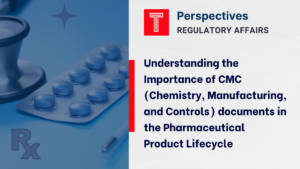Authoring Accurate and Concise Lay Summary for Clinical Trials to comply with EU CTR Requirements
The EU Clinical Trials Regulation 536/2014 (EU CT Regulation) requires that a Lay Summary (LS) must be provided for every clinical trial conducted within the European Union and henceforth included in the publicly accessible EU database, a core element of the EU “Clinical Trials Information System” (CTIS).
The lay summary or simply referred as ‘LS’ is a document that is written in plain language and provides a summary of the clinical trial, including its purpose, methodology, and results. It is intended to make clinical trial information more accessible and understandable to the general public and to improve communication between researchers and trial participants.
According to EU CTR, Article 37, the LS must be submitted to the EU Database no later than 12 months from the protocol-defined end of the clinical trial in adults, 6 months in pediatric studies, and up to 30 months for non-therapeutic Phase 1 trials. The EMA is responsible for ensuring that the lay summary meets the required standards and that it is understandable and accurate.
The inclusion of the lay summary in the EU Clinical Trials Register is important for promoting transparency and increasing public trust in clinical research. It allows patients and other interested parties to gain a better understanding of the clinical trial process, its goals, and its outcomes. The lay summary provides information about the study design, the number of participants, the treatment being tested, and any potential risks or side effects.
The lay summary is an important tool for communicating the results of clinical trials to the general public in a way that is understandable and accessible. There are several reasons why the lay summary is important:
-
- Accessibility: The lay summary makes the results of clinical trials accessible to a wider audience, including patients, caregivers, and the general public who may not have a medical or scientific background.
- Transparency: The lay summary helps to promote transparency in clinical trial reporting by making key trial information and results available to the public.
- Informed decision-making: The lay summary provides patients with the information they need to make informed decisions about their health, including whether to participate in a clinical trial or use a particular treatment.
- Trust: By providing clear and concise information about clinical trial results, the lay summary can help to build trust between patients, healthcare providers, and the medical research community.
- Regulatory compliance: The EU Clinical Trials Regulation requires that a lay summary be provided to the public for all clinical trials conducted in the EU.
If translation is required for multi-country trials, care should be taken to ensure that the original meaning and non-promotional nature of the summary are maintained. Translated summaries should also take into account the cultural validity of the medical or technical
terminology used.
Contact us by submitting a business inquiry online. We will get back to you very soon.
Requirements for preparing a Lay Summary as per Regulation (EU) No. 536/2014
-
- The Lay summary should be written in non-technical, simple, and clear language that is easily understood by a lay audience.
- It should provide a brief overview of the clinical trial, including the purpose, objectives, description of the main findings and results of the clinical trial, including any statistically significant outcomes.
- The Lay summary should include information about the trial design, the patient population, including the number of participants, their age range, and any relevant demographic information along with the interventions used, and any adverse events or side effects observed. It needs to also contain information on the conclusion and any implications for the treatment of the condition or disease being studied.
- The EU Expert Group on Clinical Trials recommends to prepare short precise Lay Summaries by leveraging readability formulae include the Flesch Reading Ease Readability Score and the Flesch–Kincaid Readability Score as a supplement to gauge the reading level.
- The Lay summary should be submitted in a separate document from the clinical trial application, using the EudraCT database within 12 months of the end of the clinical trial. It is recommended to have the LS reviewed and approved by an independent ethics committee before being submitted to EMA for public disclosure.
- The Lay summary should be updated periodically throughout the trial to reflect any significant changes or new information.
- Sponsors are responsible for ensuring that the Lay summary is accurate, unbiased, and does not contain any promotional language. If needed, the Lay summary should be translated into the official languages of the EU countries in which the clinical trial is being conducted.
- Importantly, the lay summary should be made publicly available on the EU Clinical Trials Register and the sponsor’s website, along with the clinical study report and other relevant documents.
These requirements are designed to ensure that the Lay summary provides patients and the public with accessible and transparent information about clinical trials. It is important for sponsors to understand these requirements and work with experienced medical writers to develop a clear and concise Lay summary that meets the needs of a lay audience. Additionally, sponsors should ensure that they are keeping up-to-date with any changes to the regulatory requirements for the Lay summary and adjust their processes accordingly.
Best Practices to prepare an accurate and concise Lay Summary
Preparing a lay summary for clinical trials as per Regulation (EU) No. 536/2014 requires a collaborative effort between the medical writing team, study investigators, and other stakeholders involved in the trial. Here are some key steps that medical writing teams can follow to prepare a lay summary:
-
- Identify the target audience: Determine who the lay summary is intended for and tailor the language and content accordingly. Consider factors such as age, education level, and health literacy.
- Review the trial protocol and results: The medical writing team should work closely with study investigators to ensure they have a clear understanding of the trial protocol and results. This will help to ensure that the lay summary accurately reflects the study findings.
- Identify the key messages: Identify the most important messages that should be conveyed in the lay summary. These should include the primary outcome measures, key findings, and any important safety information.
- Content Organization: The Lay summary should be no longer than 2,000 characters or 250 words, and should focus on the most important aspects of the clinical trial that would be relevant to a lay audience. Avoid using technical jargon or medical terminology that may be difficult for a layperson to understand. Use simple, easy-to-understand language and avoid complex sentence structures. Organize the information in a clear and logical manner, using headings and bullet points where appropriate.
- Focus on the patient: The Lay summary should be patient-centered and provide information about the clinical trial that is relevant to the patient’s experience. This includes information about the patient population, the interventions used, and any potential benefits or risks to patients. Consider involving patients in the development of the Lay summary to ensure that it meets the needs and interests of the patient community.
- Provide context: Provide a brief overview of the disease or condition being studied, and explain why the clinical trial is important and what it aims to achieve.
- Be transparent: The Lay summary should be transparent and honest about the clinical trial results, including any limitations or uncertainties associated with the study.
- Get feedback and review: Once the lay summary is drafted, it should be reviewed by study investigators and other stakeholders to ensure accuracy and clarity. Before finalizing the Lay summary, seek feedback from lay audiences to ensure that it is clear, understandable, and meets their needs. Also, ensure that the Lay summary is reviewed and approved by an independent ethics committee.
- Translate the lay summary: If the trial is conducted in multiple countries, the lay summary should be translated into the appropriate languages to ensure accessibility to a wider audience.
By following these best practices, sponsors can prepare a Lay summary that is clear, accurate, and accessible to a lay audience.
References:
-
- Regulation (EU) No 536/2014 of the European Parliament and of the Council of 16 April 2014 on clinical trials on medicinal products for human use, and repealing Directive 2001/20/EC
- European Medicines Agency. Guidance on the communication of clinical trial results for laypersons. 2017. https://health.ec.europa.eu/system/files/2020-02/2017_01_26_summaries_of_ct_results_for_laypersons_0.pdf
- Good Lay Summary Practice. https://health.ec.europa.eu/system/files/2021-10/glsp_en_0.pdf
- ANNEX V OF REGULATION (EU) No 536/2014 https://www.ct-toolkit.ac.uk/routemap/clinical-trial-summary-report/downloads/ANNEX-V-536.pdf
- Wada, M., Sixsmith, J., Harwood, G. et al. A protocol for co-creating research project lay summaries with stakeholders: guideline development for Canada’s AGE-WELL network. Res Involv Engagem 6, 22 (2020). https://doi.org/10.1186/s40900-020-00197-3








